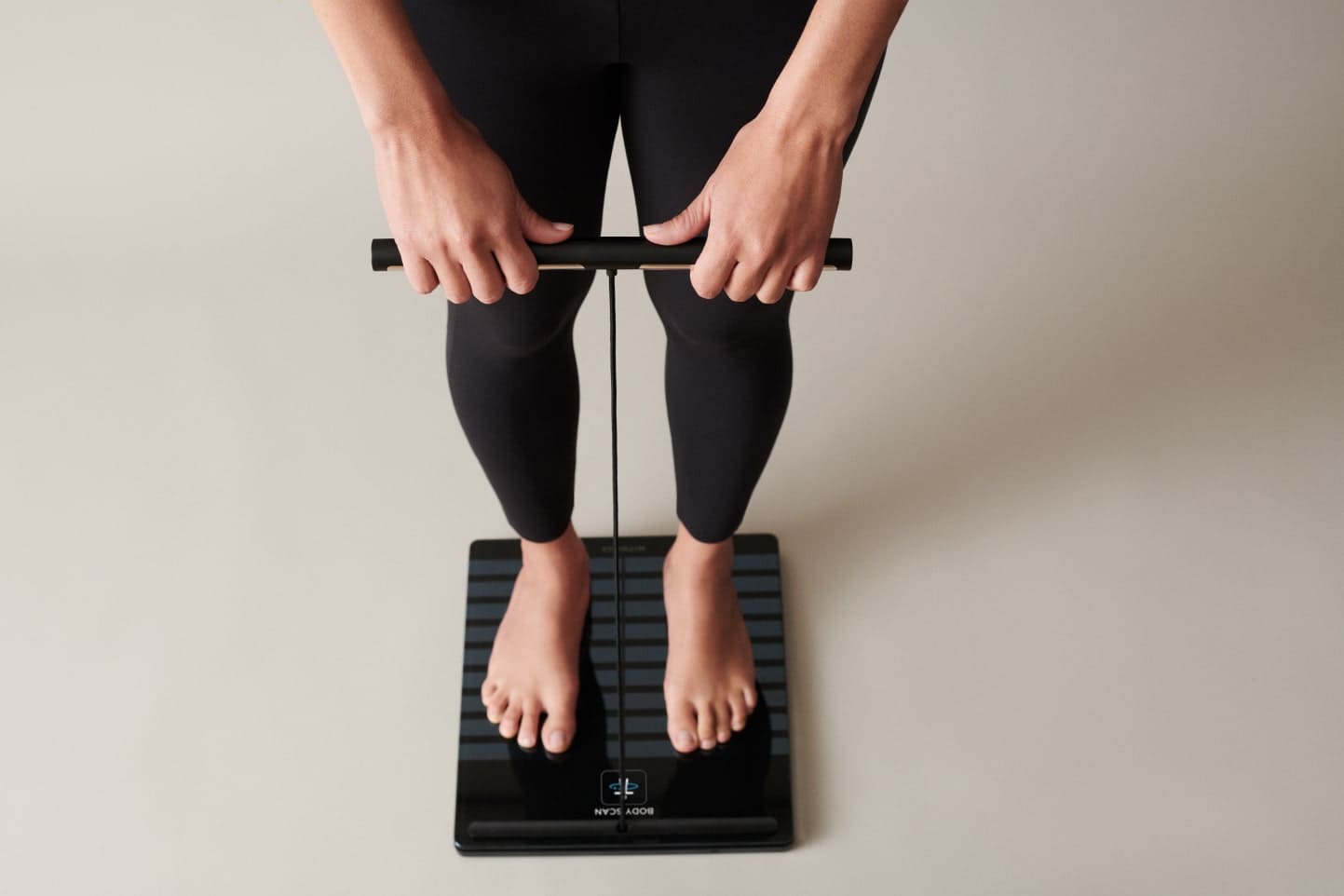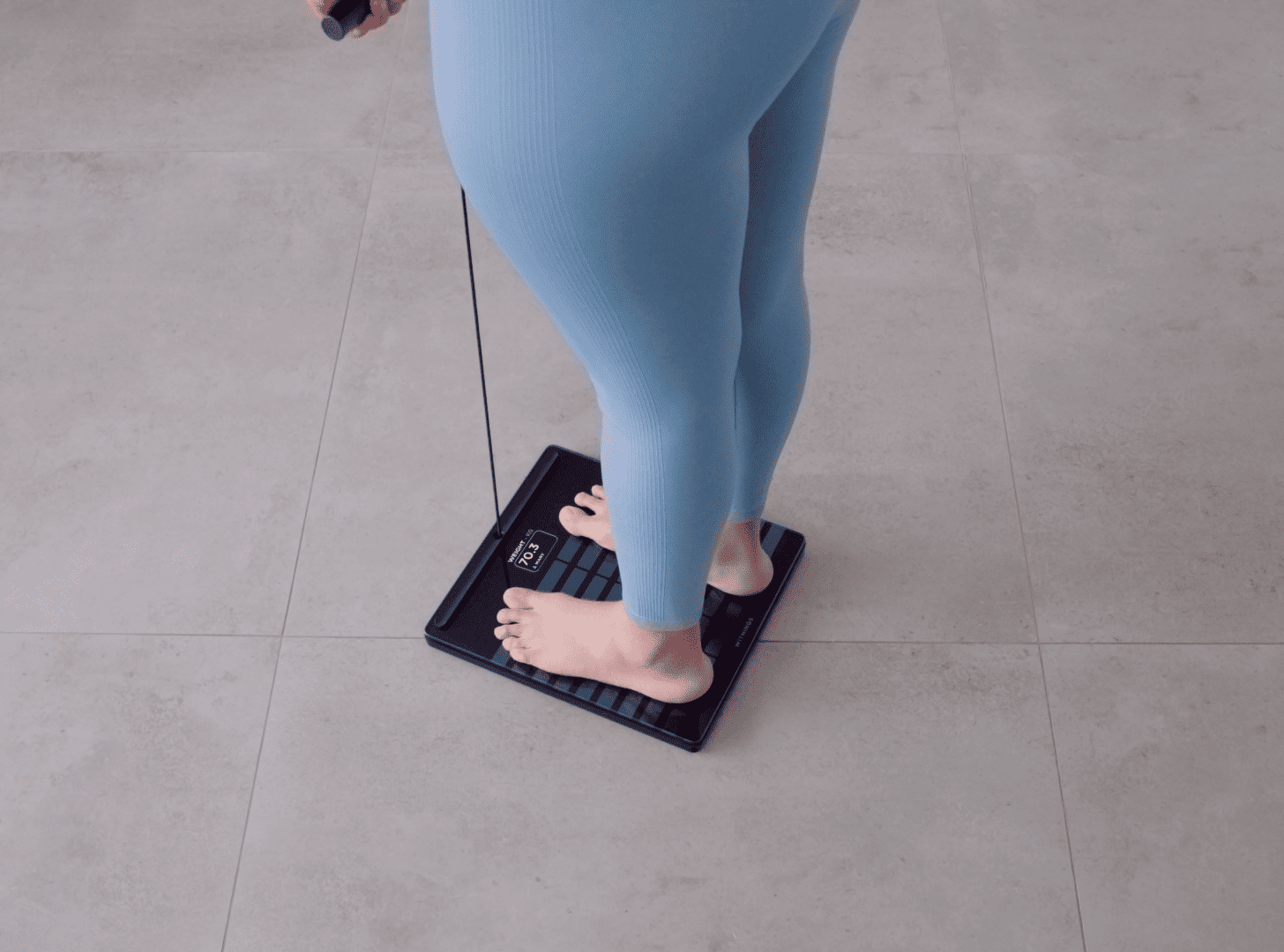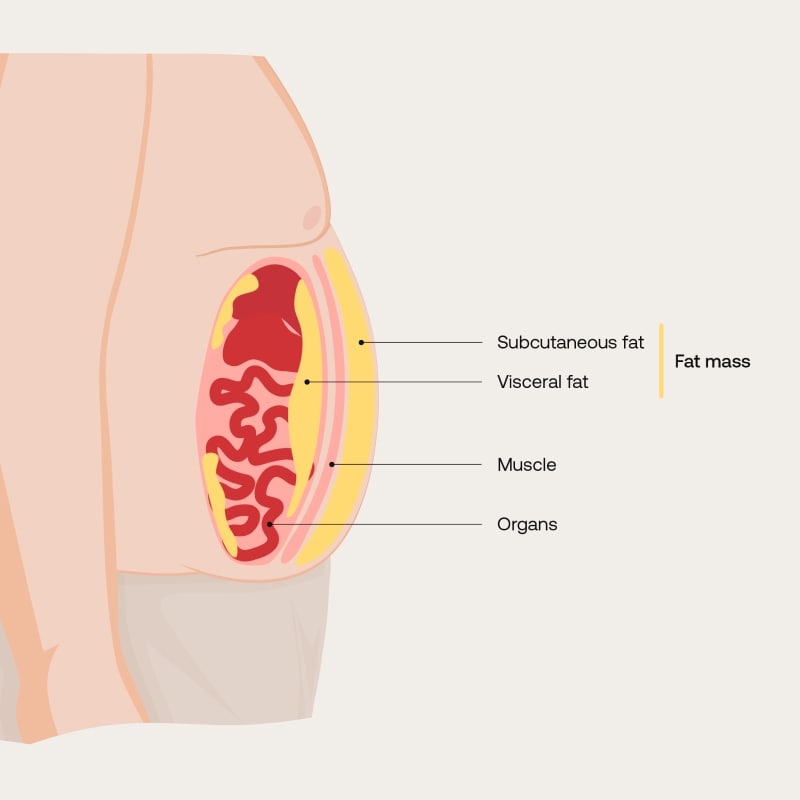
Body Fat Scales: Accurate Health Tracking
Discover our body fat scales from Withings. Accurately track your body composition and reach your fitness goals with advanced technology...
Before you continue
Website version do not match with your country.
Pricing and product availability may vary by region.


Visceral fat is more than just a number on the scale or a concern for those who are overweight; it’s a hidden health risk stored deep within the abdomen. This article will explore what visceral fat is, why an excess of it poses a significant risk for health, and how you can take proactive steps to lose visceral fat and improve your overall well-being.

Visceral fat, also known as visceral adipose tissue, is a type of body fat situated deep inside the abdominal cavity, surrounding vital internal organs like your liver, pancreas, and intestines. Unlike the more visible subcutaneous fat (the fat just beneath your skin), visceral fat is hidden from view but has a profound impact on your health risks.
While both visceral and subcutaneous fat are natural and necessary components of your body mass, an excess of visceral fat is strongly associated with a higher risk of chronic diseases. Understanding the difference between subcutaneous adipose tissue and visceral adipose tissue is the first step toward achieving a healthy weight.

Unlike subcutaneous fat, excess visceral fat actively harms your body. This tissue releases inflammatory proteins and hormones that can disrupt insulin regulation, leading to a higher risk for type 2 diabetes. It also contributes to elevated blood pressure and unhealthy cholesterol levels, increasing the risk for health problems like heart disease.
Individuals with abdominal obesity often have a high visceral fat mass and face these elevated health risks, even if their overall body mass index (BMI) falls within a seemingly healthy weight range. This is why managing the fat within the abdomen is crucial for long-term health.
Several interconnected factors can lead to an increase in visceral fat mass, contributing to abdominal obesity:
When these factors are present, your body is more likely to store fat as visceral adipose tissue rather than the less harmful subcutaneous adipose tissue.
The good news is that you can effectively lose visceral fat and prevent visceral fat accumulation through dedicated lifestyle changes.
1. Adopt a healthy diet
A cornerstone of reducing visceral fat is adopting a healthy diet. Focus on a balanced intake of whole grains, fruits, vegetables, lean proteins, and healthy fats. A healthy diet not only helps you lose visceral fat but also reduces overall subcutaneous fat. To effectively prevent visceral fat, it's critical to minimize sugary drinks, refined carbohydrates, and processed foods.
2. Increase your physical activity
Regular physical activity is one of the most powerful tools against excess visceral fat. A combination of cardiovascular exercises (like running or cycling) and strength training is highly effective at targeting and reducing your visceral fat mass. Aim for at least 150 minutes of moderate-intensity physical activity each week to combat abdominal obesity.
3. Manage stress and improve sleep
Chronic stress elevates cortisol, a hormone that promotes fat storage in the abdominal region. Implementing stress-reduction techniques such as mindfulness, yoga, and ensuring you get adequate, quality sleep can help lower cortisol levels and, in turn, help you lose visceral fat.
Because visceral fat is located deep within the abdomen, it’s hard to be aware of it. While waist circumference can be an initial indicator of abdominal obesity, more advanced tools are needed for accurate tracking. Smart body composition scales, such as Withings smart scales, can estimate your visceral fat mass using bioelectrical impedance analysis, providing a clear metric to monitor as you work toward a healthy weight.
Monitoring your visceral and subcutaneous fat levels is essential. Even people who are not visibly overweight can have high levels of visceral adipose tissue, placing them at a higher risk for metabolic diseases. Taking control of your visceral fat is a critical step in lowering your long-term health risks.

Body Fat Scales: Accurate Health Tracking
Discover our body fat scales from Withings. Accurately track your body composition and reach your fitness goals with advanced technology...

Muscle mass scales: Precise tracking solutions
Explore our muscle mass scales from Withings. Accurately monitor your body composition and achieve your fitness goals with advanced...

Healthy body composition: What it is and how to improve it
What is body composition? Learn how to measure it, what defines a healthy body composition, and tips to improve your fat, muscle, and water...

What is BMI? Understanding Normal Body Mass Index for Men and Women
What is BMI? Body Mass Index helps determine if you're underweight, normal weight, or overweight. Learn how BMI works for men and women.
Join millions of users who are improving their health with Withings. Sign up to discover the entire Withings ecosystem, our latest products, and exclusive offers.
By registering, you agree to receive advertising e-mails from Withings. However, if you change your mind, you can unsubscribe at any time.

